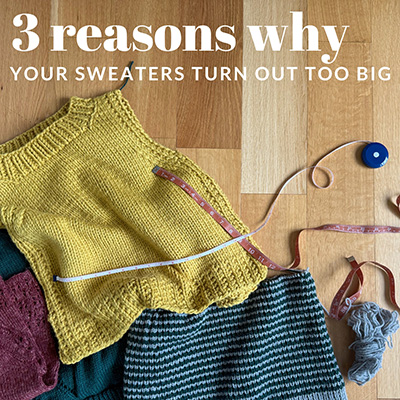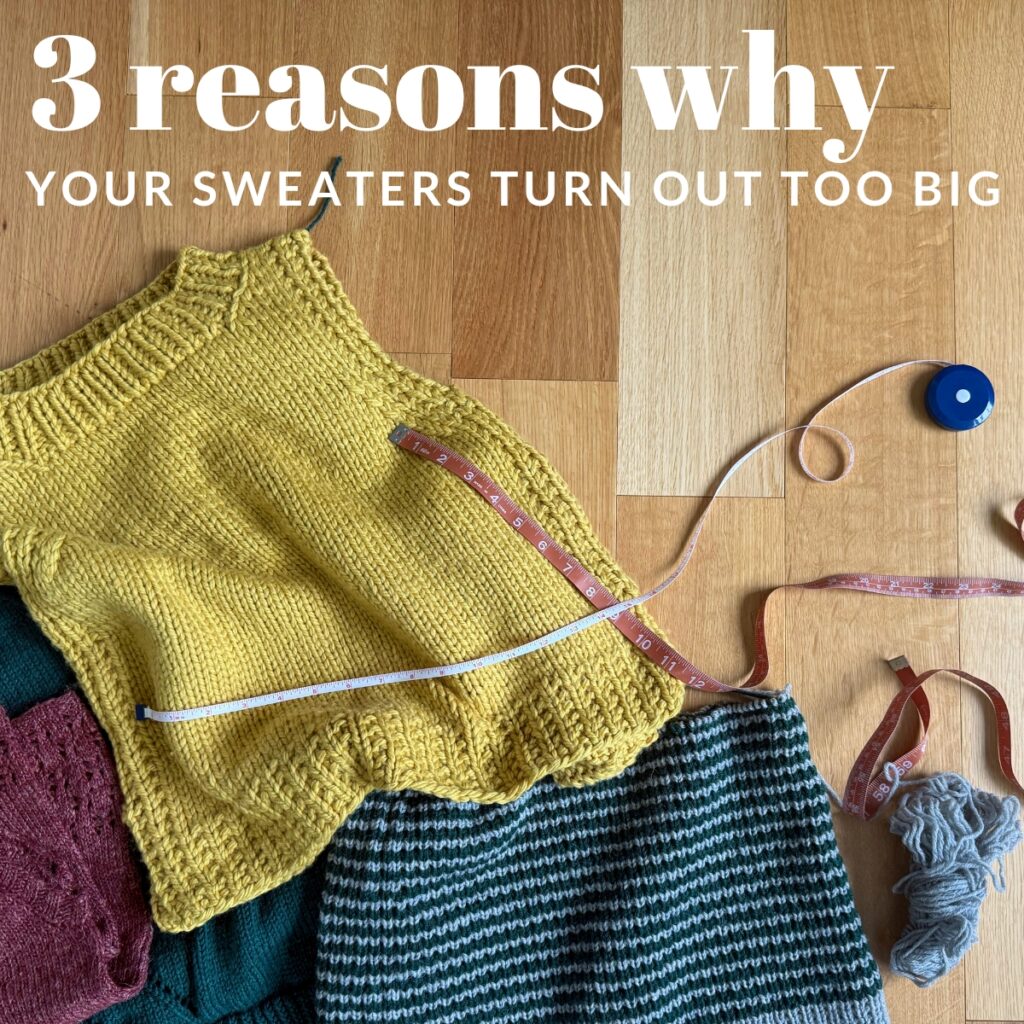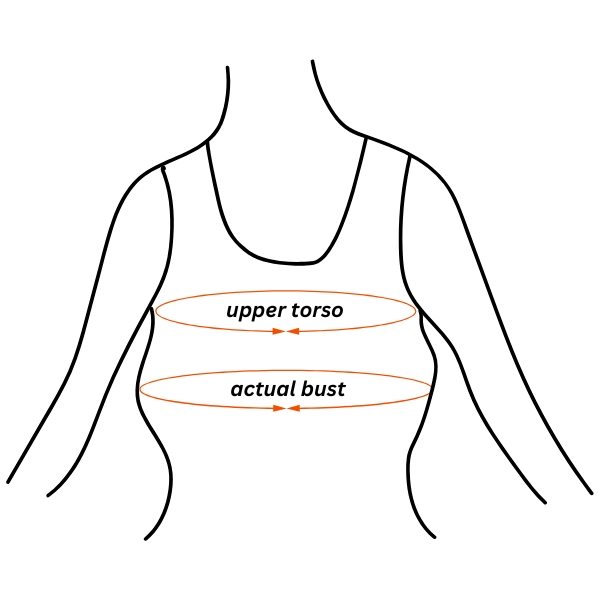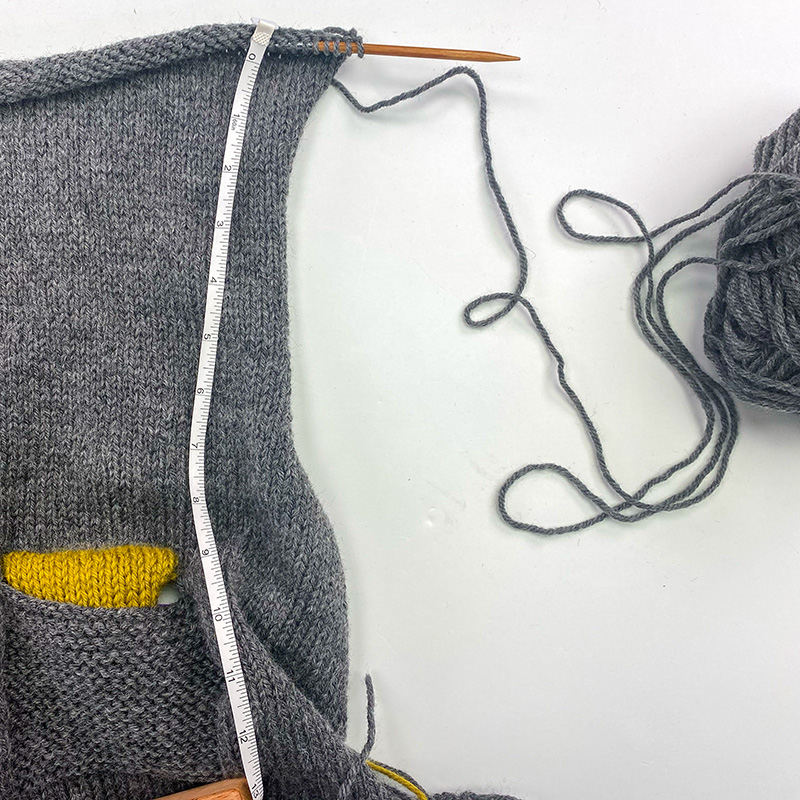Have you ever had a sweater turn out bigger than expected or just not fitting properly, despite gauge swatching? You may have asked yourself, “what did I do wrong??” It’s a common occurrence so you’re not alone! Even if you swatched at the beginning to make sure you were getting the proper gauge, things can still go awry which can impact the finished size of your sweater.
There are many possible reasons for why this may occur, but below are 3 popular reasons you may not have previously considered…
Reason #1: Not considering your upper torso measurement (for certain body shapes and in certain garment styles)
Most sweater patterns will suggest picking a size whose finished measurement is a certain number of inches larger than your actual bust. This is called “positive ease” and the amount of ease a designer suggests is often determined by the construction-style of the sweater (i.e, raglan style often suggest 1-4″ whereas drop shoulder style often suggest 6-10″). And although for some people using their actual full bust measurement is a good starting point, others may benefit from to using the upper torso (or sometimes referred to as “high bust”).
This is because you may have a large bust, but a smaller frame. The upper torso measurement can sometimes be a better indicator of overall frame size. And so applying the ease amount instead to your upper torso measurement (which is the circumference above the bust, at the underarms), provides a fit that feels like it fits your overall frame better.
This may not apply to all garment styles and constructions, but it’s worth investigating further if you find that your sweaters always feel too big on you. I have found this to work well in drop-shoulder pieces where the ease range is on the higher amount (around 6-10″ typically). This is because it allows you to apply this ease range to the upper torso measurement but there is still usually some positive ease at the bust. For other construction styles this may not be possible and so other adjustments need to be made in order for it to not feel too tight in the bust.
To learn more about this (as well as other sizing and ease tips), check out this blog post.
Reason #2: You decided your underarm-to-hem length without accounting for your neck-to-underarm length
A common sizing issue I see is that sometimes knitters will decide on their underarm-to-hem length based upon their actual underarm and not the sweater’s underarm. You can have 2 sweaters that both measure the same length from underarm to hem, but one will wear much longer on your torso than the other due to that fact that the underarm falls lower on the body (due to having a deeper armhole depth).
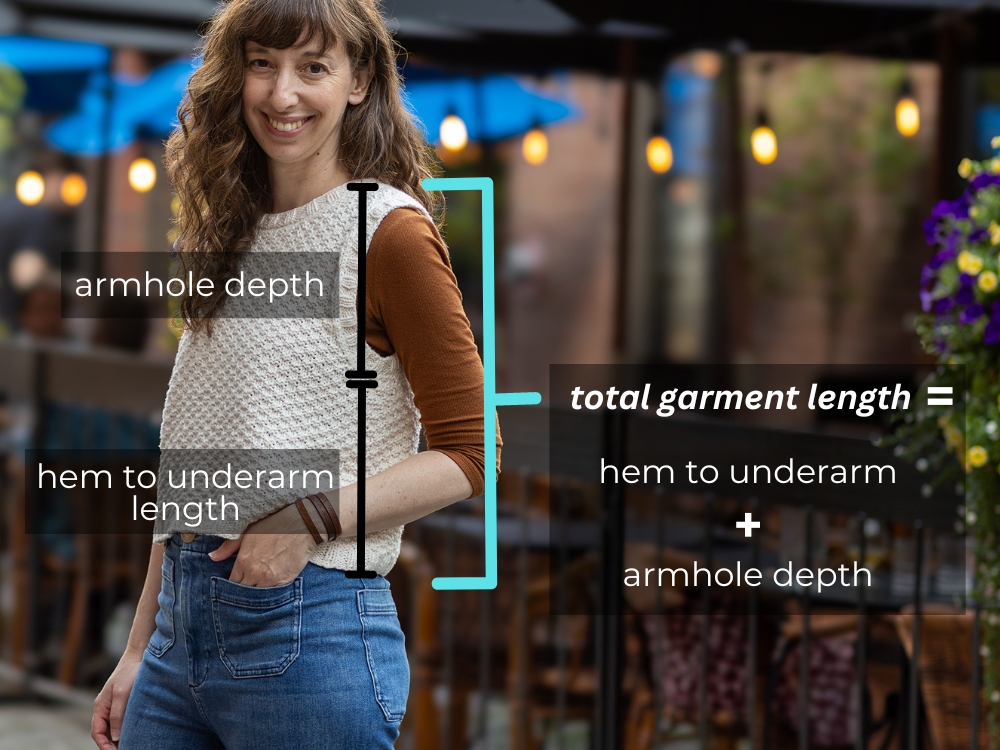
So especially when knitting bottom-up, it’s important to understand the measurements yet to come in the yoke area before deciding on your final desired underarm-to-hem length. You can do this by looking at the garment’s schematic (which every sweater pattern should have). I talk all about this in detail in this blog post.
Reason #3: The pattern said to knit a certain number of inches, but your row gauge grew after blocking
Some patterns will specify the exact number of rows to work to attain a certain length, based upon the pattern’s row gauge. But sometimes they will just provide a measurement to work to instead. For example, it may say “Continue working as established until piece measures approx. x” “. A common issue I see is when someone does exactly this, but doesn’t account for the fact that their row gauge loosened considerably after blocking (VERY common with superwash yarns!).
So as they knit, they work to the number of inches specified in the pattern, but then after blocking it grows a lot. It’s not as much an issue for small row gauge changes but more significant changes, such as those often seen with superwash yarns, can cause dramatic lengthening you weren’t expecting. I’ve also seen this happen a lot with sleeves (and again, more dramatically with superwash).
If you swatch at the beginning of the project and learned through that process that your row gauge loosened post-blocking (so you were getting less rows over 4″ after the swatch blocked then you had before you blocked), you’ll want to keep that in mind as you knit any lengths specified in the pattern. I talk more about this and how to know how much your garment will actually grow post-blocking in this blog post (same post as referenced above).
I hope it’s been helpful learning about these possible reasons for why your sweaters may be turning out bigger than expected. If you have found other reasons for why this has happened to you, I’d love to hear!

